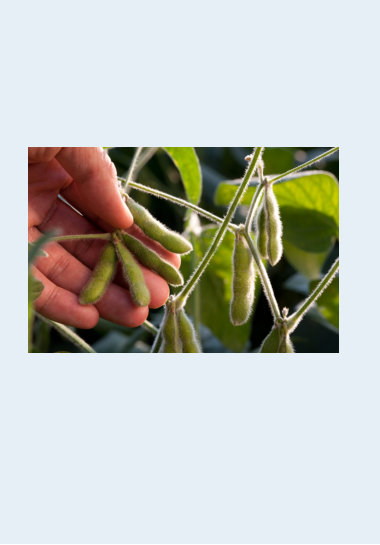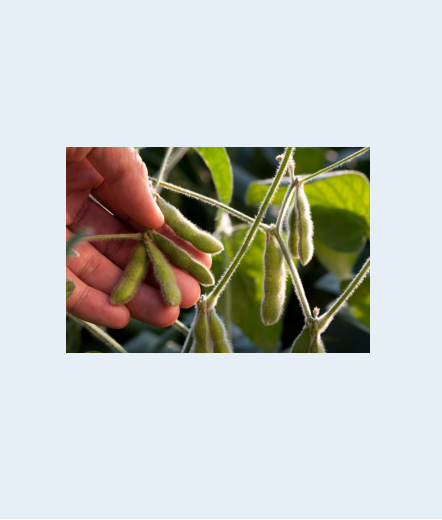
The Broken Arrow
Crops
Farming & Ranching Takes Faith
Farming sandy loam soil without irrigation certainly has it’s challenges. Without a large aquifer below our property, one can not stress out our own well nor those of the various neighboring farmsteads either. To pump millions of gallons of water out of the ground without a aquifer present, could deplete all of our main source of water, our wells. So, raising crops under these type of circumstances requires a lot of faith. But farmers and ranchers are the ones to exercise their faith a lot.Wheat
Ah, wheat, the bread of life. Probably one of the oldest sustainable food sources for mankind. We enjoy raising and harvesting wheat! We both learned that from our parents and grandparents. As long as there is a reasonable amount of rain, wheat does well in our sandy loam soil. We usually plant some every year.Barley & Oats
We consider barley and oats as alternative crops. We do not raise either as much as we use to. However if the market looks good for the futures, we will add either or both to our crop rotation. And it’s especially good to get some fresh oats now and then for our horses and chickens to dine on.Flax
Flax is also one of the favorite crops we like to raise. Although at times it is a challenge too, as when flax is windrowed to dry before harvesting. A high wind can simply blow the curing cut flax windrows away, or roll them into large lumps that almost have to be hand pitched into a combine. Recently the price of flax has not been doing so well. When the price is almost the cost of production, we don’t have this crop in our rotation program. But if the market is good for this crop, we will certainly be raising some.
Cattle Enjoy Dining On Alfalfa
As a part of our cattle dietary needs, and crop rotation requirements, we raise alfalfa annualy. Alfalfa is an excellant feed for our weanling to yearling age commercial steers and heifers. We also feed alfalfa to our cow herd during calving time, as it is excellent feed to get the newborn baby calves off to a good start on enriched milk, when the mama cows have alfalfa as their basic forage during early lactation. Occasionally, if blessed with an excellent second cutting of alfalfa, we can also sometimes market excess alfalfa that we produce.


Soybeans
This crop is probably the most expensive to put in and raise. But if all goes well, it is also one of the best paying crops to grow in our area. One wonderful trait of soybeans, is that it is excellent to add to ones crop rotation. As it actually helps to enrich the soil it is grown in. We in America have not incorporated it as much in our daily diet, as the Asians have in their daily diet. But it is known as an energy food.
The Broken Arrow
Crops
Farming & Ranching Takes
Faith
Farming sandy loam soil without irrigation certainly has it’s challenges. Without a large aquifer below our property, one can not stress out our own well nor those of the various neighboring farmsteads either. To pump millions of gallons of water out of the ground without a aquifer present, could deplete all of our main source of water, our wells. So, raising crops under these type of circumstances requires a lot of faith. But farmers and ranchers are the ones to exercise their faith a lot.Wheat
Ah, wheat, the bread of life. Probably one of the oldest sustainable food sources for mankind. We enjoy raising and harvesting wheat! We both learned that from our parents and grandparents. As long as there is a reasonable amount of rain, wheat does well in our sandy loam soil. We usually plant some every year.Barley & Oats
We consider barley and oats as alternative crops. We do not raise either as much as we use to. However if the market looks good for the futures, we will add either or both to our crop rotation. And it’s especially good to get some fresh oats now and then for our horses and chickens to dine on.Flax
Flax is also one of the favorite crops we like to raise. Although at times it is a challenge too, as when flax is windrowed to dry before harvesting. A high wind can simply blow the curing cut flax windrows away, or roll them into large lumps that almost have to be hand pitched into a combine. Recently the price of flax has not been doing so well. When the price is almost the cost of production, we don’t have this crop in our rotation program. But if the market is good for this crop, we will certainly be raising some.
Cattle Enjoy Dining On Alfalfa
As a part of our cattle dietary needs, and crop rotation requirements, we raise alfalfa annualy. Alfalfa is an excellant feed for our weanling to yearling age commercial steers and heifers. We also feed alfalfa to our cow herd during calving time, as it is excellent feed to get the newborn baby calves off to a good start on enriched milk, when the mama cows have alfalfa as their basic forage during early lactation. Occasionally, if blessed with an excellent second cutting of alfalfa, we can also sometimes market excess alfalfa that we produce.

Soybeans
This crop is probably the most expensive to put in and raise. But if all goes well, it is also one of the best paying crops to grow in our area. One wonderful trait of soybeans, is that it is excellent to add to ones crop rotation. As it actually helps to enrich the soil it is grown in. We in America have not incorporated it as much in our daily diet, as the Asians have in their daily diet. But it is known as an energy food.
























